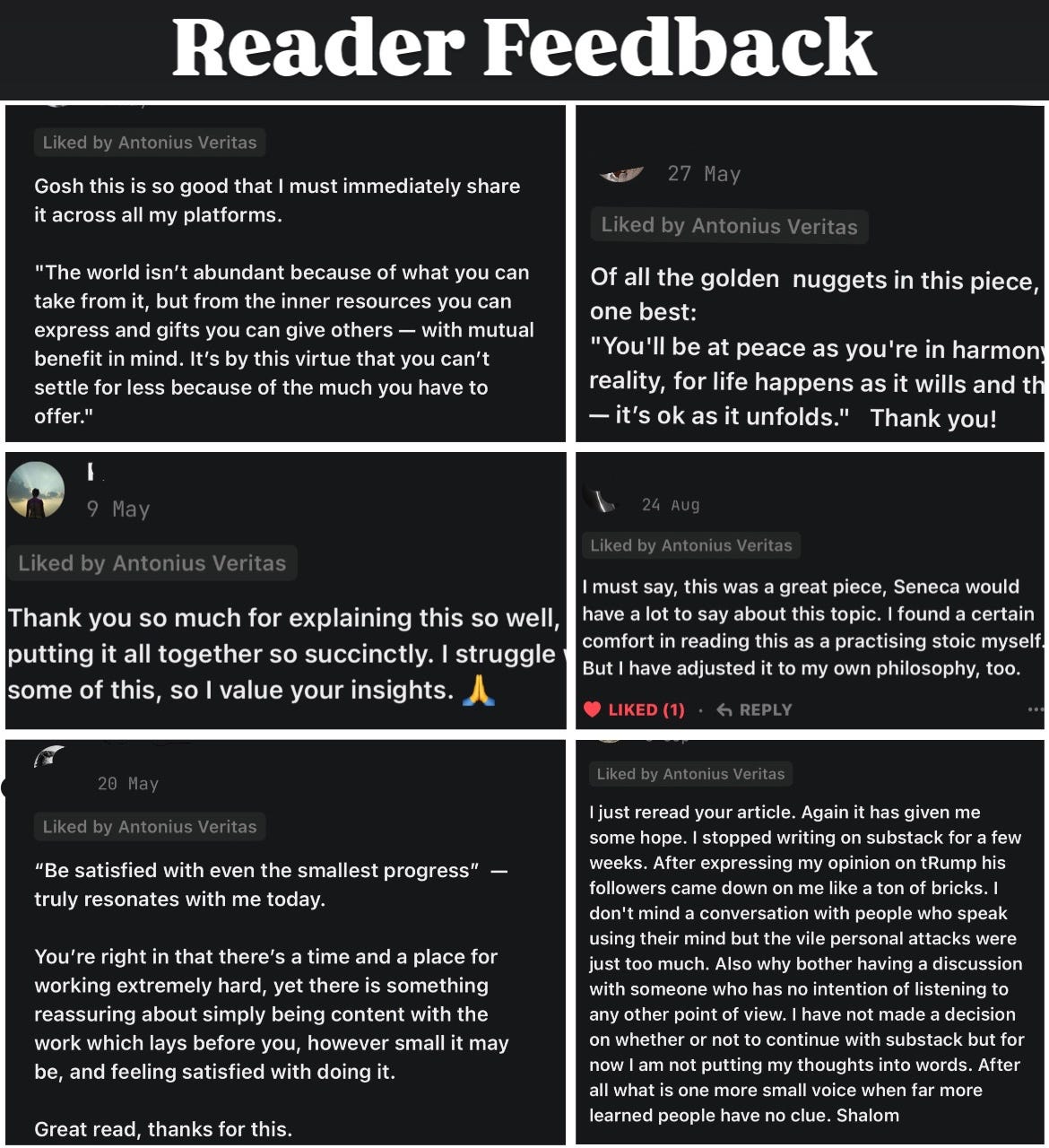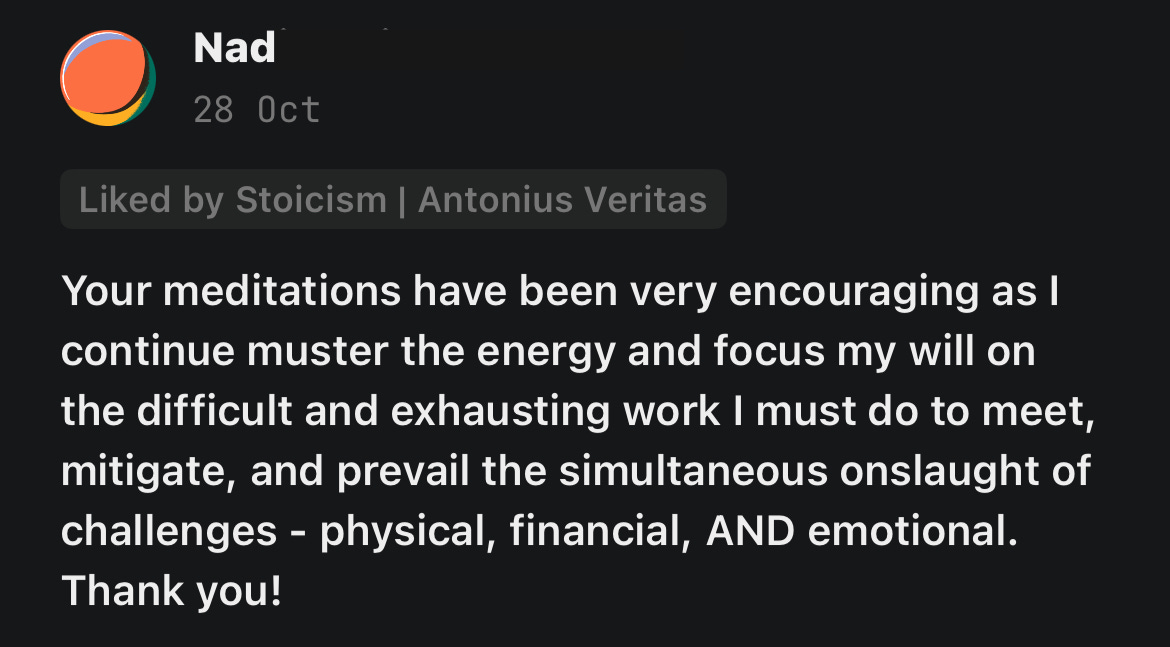Lead to Win III. When to Follow
Leadership isn’t about acting first. It’s about acting right.
The ‘Lead to Win’ section is a companion for The Stoic Manual to help you become wealthier, happier & more powerful through the best strategies and tactics to succeed at leading in your workplace, family, and business—by Dr. Antonius Veritas. Complement this with the ‘Neuroscience-based Tools’ section.
P.S: Skip to the end for a mini-course, a step-by-step guide, on when and how to follow without losing your authority. This information is worth the $2,000 people spend on Leadership seminars.
Introduction
Many of you have requested me to tackle Leadership through Stoic principles.
I’ve therefore launched the Lead to Win section in that regard.
We’ll use some scenarios and stories from the hospital setting for illustrative purposes.
But you don’t have to know what every jargon means to get value from the entries.
I want to reassure you that once you get the concept, from a first principles perspective, you’ll be able to apply it in any field.
Miyamoto Musashi said it best,
“If you know the way broadly, you will see it in everything.”
In the following weeks, we’ll build up your foundation as a leader because you’re only as strong as it is sturdy.
Then we’ll move forward to other themes.
I recommend you read these entries in series, from the first one, while applying the practical guides of the mini-course I’ll be providing at the end.
Feel free to reach out in case of any questions, suggestions, or input.
Foundation 3: When to Follow
Greek Mythology is undefeated in distilling timeless wisdom.
It has shaped who I am.
I remember reading the tale of Daedalus and Icarus as found in Ovid’s Metamorphoses when I was a young boy.
The story goes like this.
Daedalus, the brilliant inventor, found himself imprisoned on the island of Crete after betraying King Minos by helping Theseus escape the Labyrinth.
Frustrated and desperate, Daedalus looked out from the tower where he and his son Icarus were held captive, feeling the weight of their hopeless situation.
But determined to escape, he studied the birds soaring in the sky and devised an extraordinary plan: they would fly to freedom.
He began gathering feathers from birds that landed near their tower, carefully crafting wings using wax to hold them together.
Daedalus felt a flicker of hope as he shaped the feathers into a design that mimicked the wings of birds.
With precision and care, he constructed two sets of wings—one for himself and one for Icarus.
When the wings were complete, Daedalus tested them, soaring a short distance to prove they worked.
He felt both pride in his creation and fear for his son, knowing the risks of flight.
Calling Icarus to his side, he gave him a stern warning:
“Fly neither too low, where the sea will weigh you down, nor too high, where the sun will melt the wax.”
As they strapped on the wings, Daedalus felt a pang of doubt but pushed it aside, focusing on their escape.
He leapt first, gliding over the waves, feeling a rush of exhilaration as they left Crete behind.
Icarus followed, laughing with joy, as father and son soared together in the open sky.
For a time, they flew in perfect harmony, their spirits soaring as high as their wings.
Icarus felt a newfound sense of freedom, reveling in the thrill of flight.
Overcome with excitement, he ignored his father’s warnings and began to climb higher and higher toward the sun.
Daedalus, glancing back, saw Icarus rising dangerously close to the sun and shouted desperately, “Come back down, Icarus! Follow the middle path!”
Fear gripped Daedalus as he watched his son push the limits of their fragile wings.
But Icarus, intoxicated by the sensation of freedom, paid no heed to his father’s cries.
The sun’s heat grew intense, softening the wax that held Icarus’s wings together.
As the feathers began to fall away, Icarus felt panic setting in, realizing his mistake too late.
Flapping his bare arms uselessly, he plummeted from the sky into the sea below.
Daedalus, seeing his son fall, was overwhelmed with grief and despair.
He flew down as quickly as he could, scanning the waves for any sign of Icarus.
When he found his son’s lifeless body floating in the sea, Daedalus felt the sharp pain of loss pierce his heart.
He carried Icarus to a nearby island and buried him with great sorrow, naming the island Icaria in his memory.
Overcome with sadness but knowing he must go on, Daedalus gathered his strength and resumed his journey.
He eventually reached Sicily, where he found safety, though the loss of his son haunted him for the rest of his days.
Icarus’ story warns us of the cost of overconfidence.
That’s why effective teams thrive on a balance.
Good leadership isn’t always about taking and issuing commands.
Often, it’s about knowing when to support, when to step forward, and when to step back.
Follow.
In medicine or any high-pressure environment, finding this balance is critical.
Let’s explore two other stories from the medical field that reveal the profound impact of understanding when to lead and when to follow.
I. Overstepping
The emergency department buzzed with its usual chaos—monitors beeping, stretcher wheels screeching, and overlapping voices filling the air.
Suddenly, the room fell silent as paramedics burst in, wheeling a patient gasping for air, his skin pale and glistening with sweat.
The team instinctively tensed, their focus narrowing on the urgent puzzle before them.
Dr. Patel, the attending physician, moved toward the gurney, her practiced eyes scanning the patient, piecing together his distress.
Her mind raced, balancing urgency with precision, but before she could issue a command, a voice broke through.
Dr. Ruiz, a brash resident, stepped forward, his tone sharp with determination as he barked, “We’re intubating! Get the RSI kit ready now!”
The team froze, torn between Ruiz’s assertive orders and Patel’s expected leadership.
Dr. Patel felt the weight of the moment, knowing that a misstep could cost the patient his life.
She took a breath and spoke, her voice calm but resolute: “Stop.”
The room shifted as all eyes turned to Patel, who motioned for a nurse to recheck the vitals.
Her gaze locked on Ruiz as she said firmly, “Look at the oxygen levels. This isn’t respiratory—it’s cardiac.”
With clarity cutting through the tension, Patel directed the team to pivot, ordering the necessary cardiac interventions.
The team snapped into action under Patel’s steady leadership, their movements now aligned and purposeful.
The patient’s color began to improve, his breathing stabilizing as the crisis resolved.
Patel exhaled quietly, her confidence reinforced by the team’s response and the patient’s recovery.
Later, Ruiz approached Patel in the quiet of the staff room, his earlier confidence replaced by humility.
“I overstepped,” he admitted, avoiding her gaze. “I thought I needed to act fast.”
Patel studied him for a moment before placing a hand on his shoulder, her expression soft but serious.
“Your instincts were good,” she said, her tone measured, “but leadership isn’t about acting first. It’s about acting right.”
II. Following
The operating room hummed with focus, the mechanical beeps punctuating the air like a heartbeat.
Leah, a junior nurse, stood near the monitor, her eyes scanning the patient’s vital signs as the surgeon leaned into the light, his hands steady on a delicate vascular repair.
Her pulse quickened as she noticed a subtle but steady drop in blood pressure—a faint decline that hinted at potential trouble ahead.
For a moment, Leah hesitated, her mind racing through the options.
She felt a knot of doubt.
Should she call it out herself or follow protocol and inform the anesthesiologist first?
Taking a steadying breath, she decided on the latter, leaning toward Dr. Cooper, the anesthesiologist.
“There’s been a small but steady drop in BP over the last few minutes,” Leah said, keeping her voice calm despite the tension curling in her chest.
Cooper turned immediately to the monitor, his sharp eyes scanning the data for confirmation.
“Good eye,” he said, swiftly adjusting the fluids and relaying the situation to the surgeon.
The surgeon nodded in acknowledgment, continuing his work as the patient’s vitals stabilized within moments.
Relief flooded the room, the tension dissipating like a slow exhale as the team returned to their rhythm.
Leah watched the monitors closely, feeling the weight of her earlier decision lift with the patient’s recovery.
After the procedure, Dr. Cooper approached Leah, his tone warm yet deliberate.
“That observation saved us a lot of trouble,” he said. “You followed the protocol perfectly, and it made all the difference.”
Leah felt a quiet swell of pride, not from the praise itself, but from knowing she had acted decisively and effectively in a critical moment.
Reflecting on the experience, she realized that following the process didn’t mean losing initiative—it sharpened it.
She ensured the best outcome for the patient and strengthened the trust of her team by trusting the chain of command and acting with precision.
Leah left the operating room more confident in her skills and in the power of teamwork and process to achieve extraordinary results.
Actionable Ideas for When to Follow
The actionable strategies below will help you know when and how to follow—without losing your authority.
You’ll also get step-by-step guidance on why every principle works, the benefits to expect and detailed scenario examples to draw inspiration from so that your team can win.
Let’s dive in…
Do you like this entry so far? ⭐️
Support the publication to read the rest and access 100+ practical insights and Mini-courses to help you apply Stoicism for a happier, wealthier life—Lead to Win, Optimize Your Health with Neuroscience-based tools & Stoic Essays.
Join 10,000+ other readers.
What my supporters are saying.









